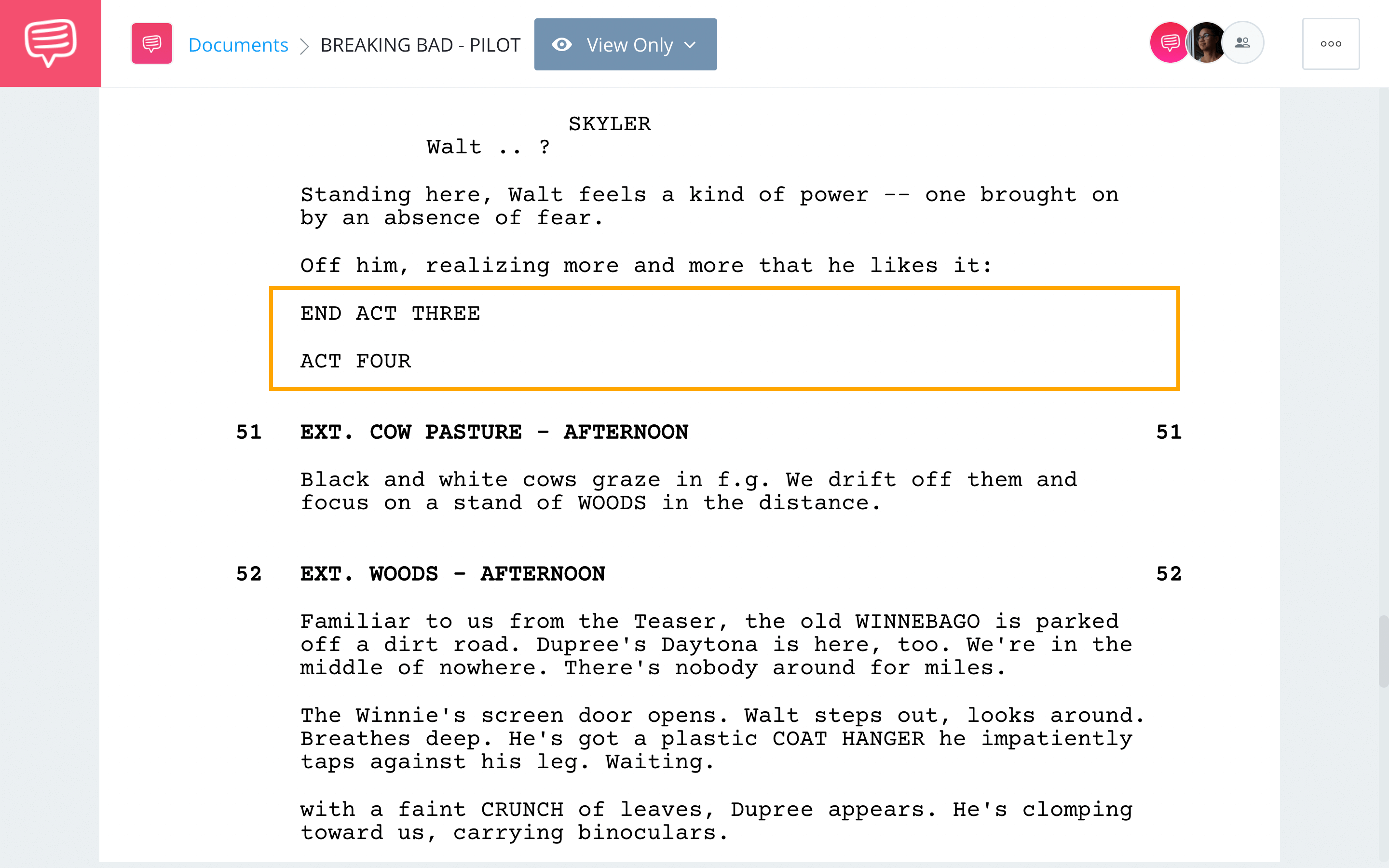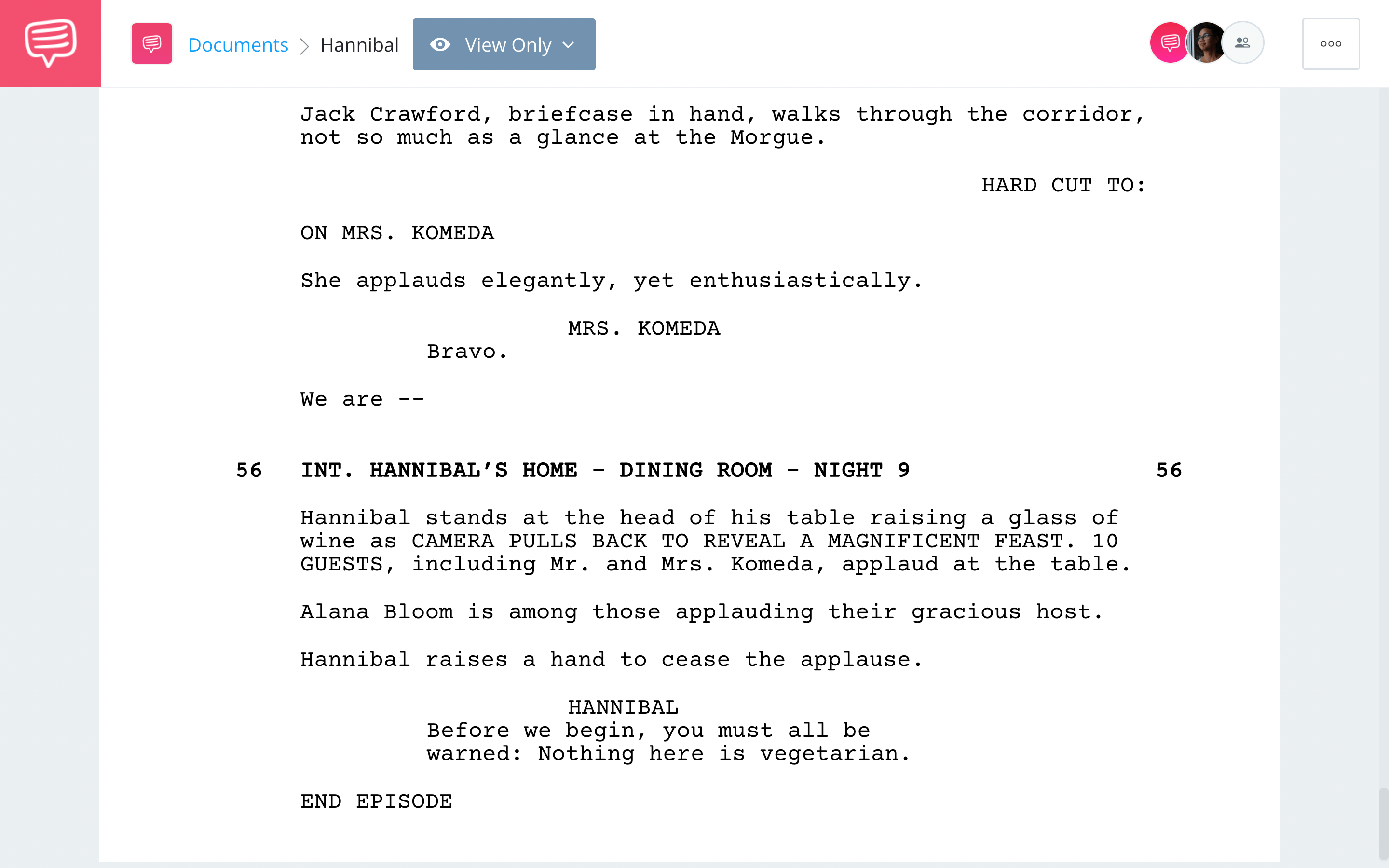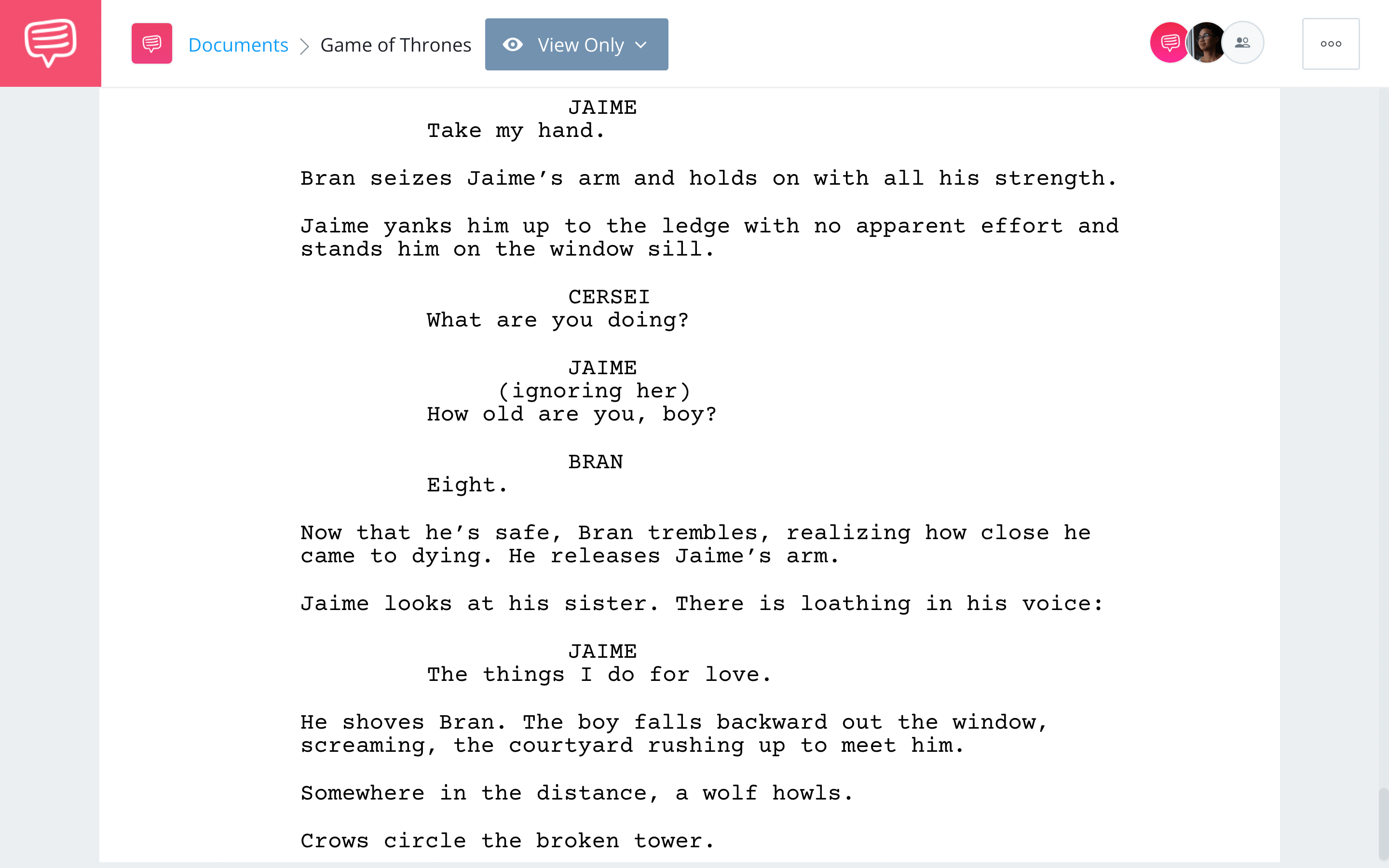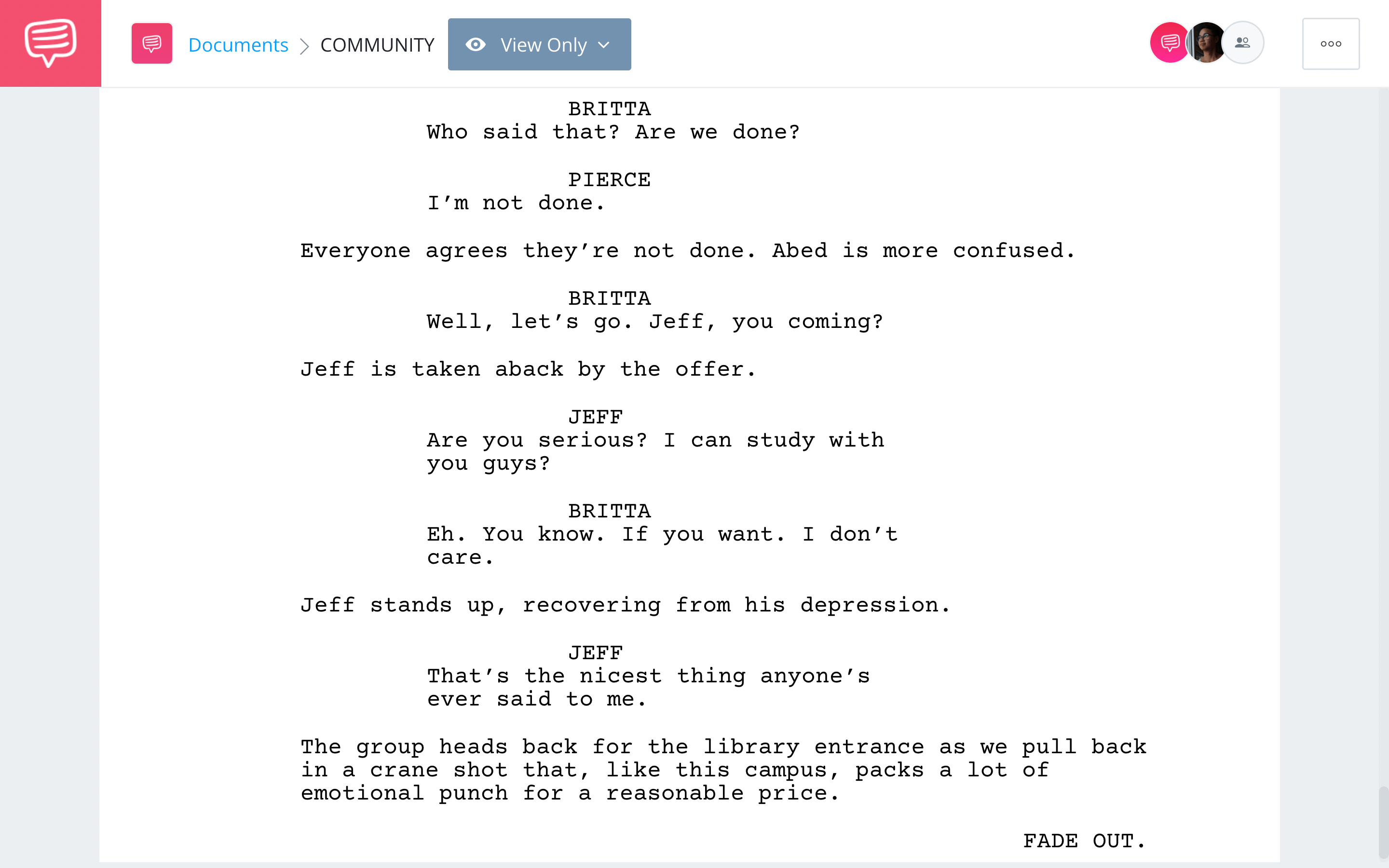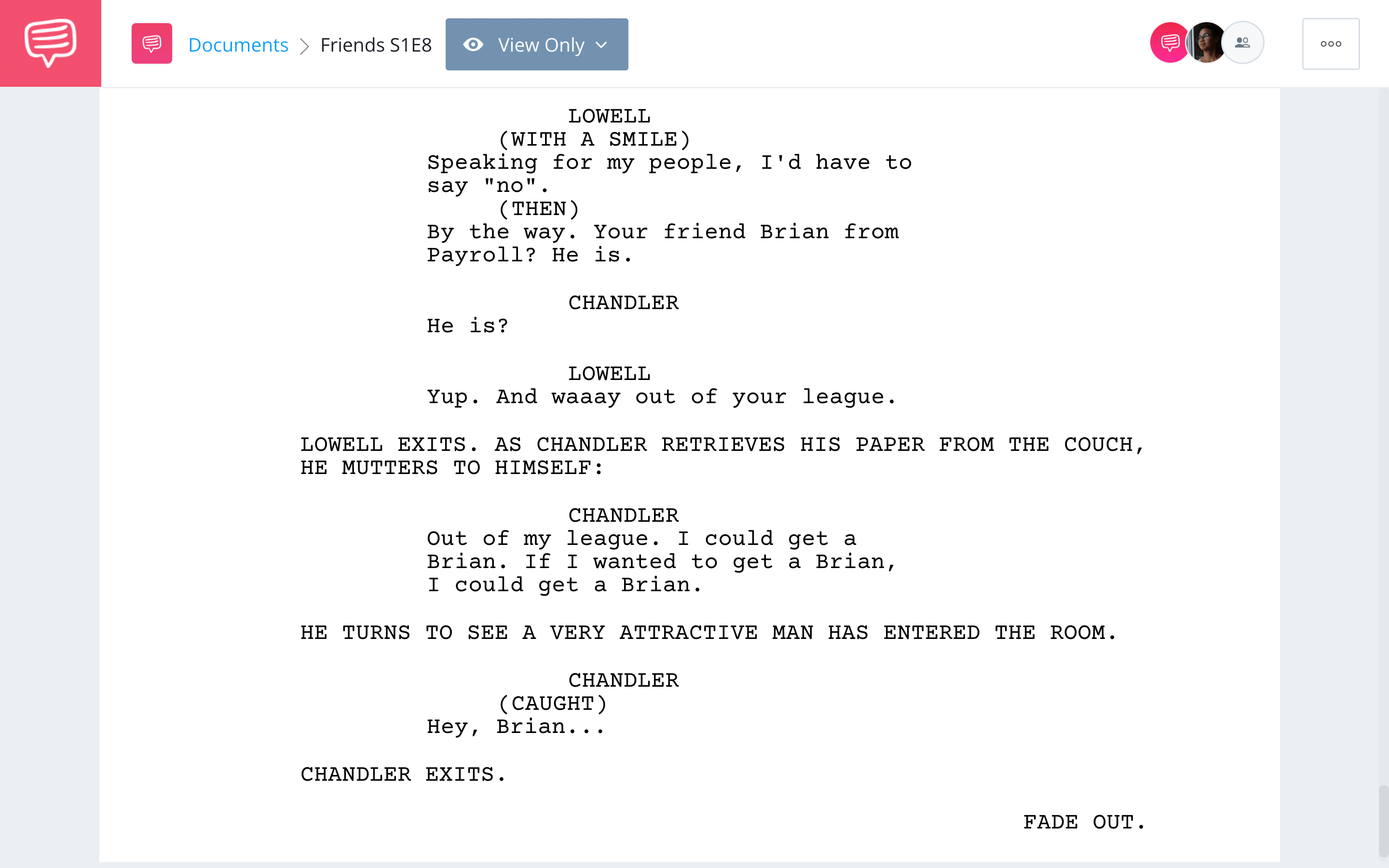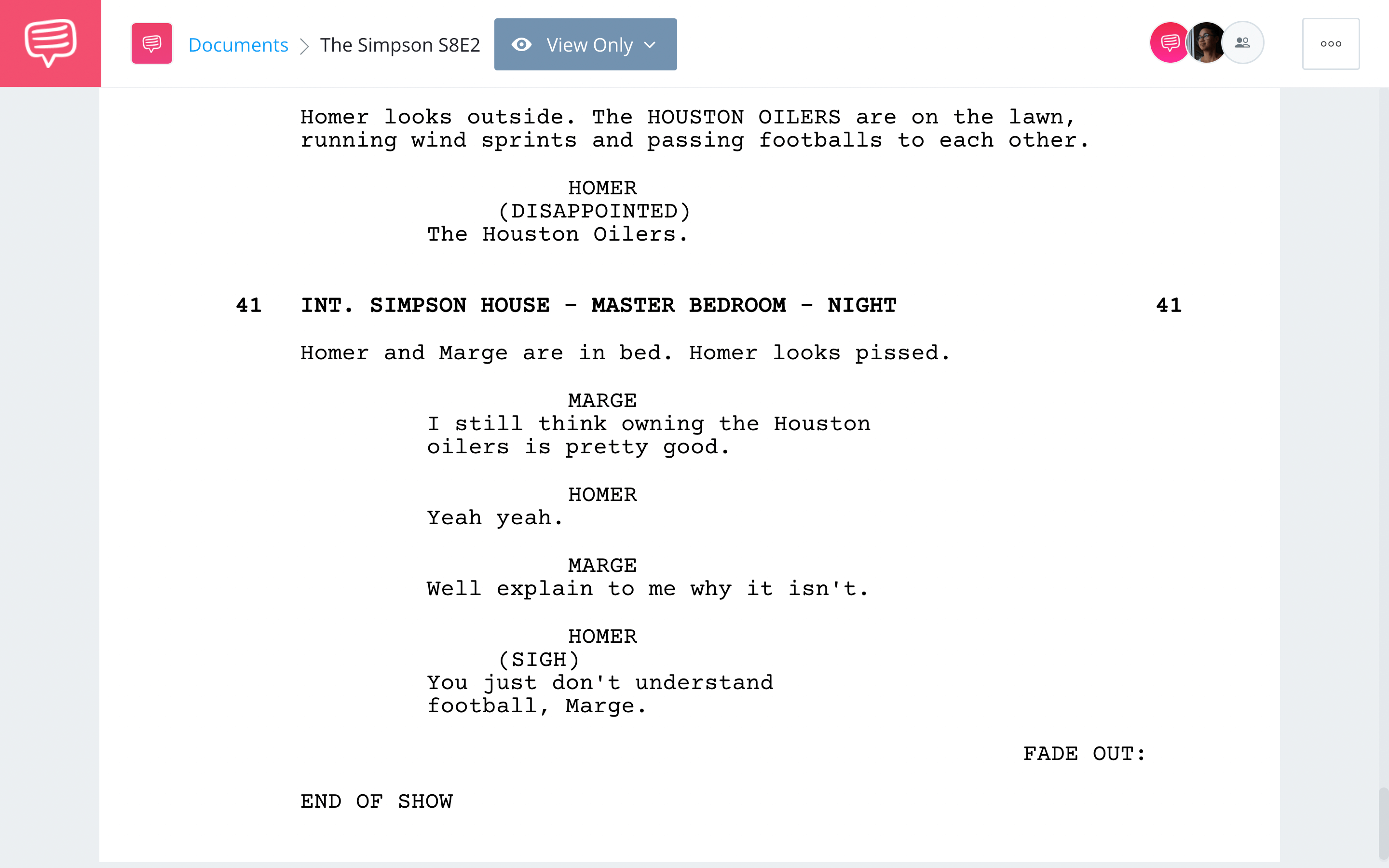How long is a television script? If you want to write a television pilot, you will want to ensure that your script follows all formatting and length guidelines. But knowing exactly how long a television script should be can be more of a challenge than one might expect. In this post, we’ll be breaking down the different types of television scripts, defining the page counts for each, and explaining how runtime is calculated based on the number of pages in a screenplay. But first, let’s get started by exploring the differences between writing for film and writing for television.
How Long is a TV Show Script
How film and television scripts differ
Television scripts, which are also known as teleplays, are similar in style and formatting to feature-film screenplays but diverge in a couple of key areas.
If you are used to writing films, be sure to take a moment to step back and reset your brain before diving straight into a teleplay.
Here's the Breaking Bad pilot script we imported into Studiobinder's screenwriting software. Pay attention to the "act break," which is a unique element in writing for TV.
The final act break from the Breaking Bad pilot • Read the rest of the pilot
As you can see in the excerpt above, the pilot for Breaking Bad was broken up into acts. For more on the writing of the show, read our analysis of how Breaking Bad uses symbolism.
But the pilots written for a streaming service like Netflix, such as the Stranger Things pilot, might not be broken up into acts because those are designed for commercial breaks. And until recently, Netflix didn't interrupt its shows to air commercials.
The other key technical difference between a film screenplay and a teleplay is the length as calculated by the page count. However, the ideal page count for a television script is not quite as cut and dry as it is with features. The ideal page count for a teleplay will vary depending on the type of show being made.
How Long is a Script for a TV Show
The different types of teleplays
Scripted television shows, and their teleplays by extension, tend to fall into one of two types, which can then be broken down into further subcategories. These two primary types are: hour-long and half-hour. As the names imply, the key distinction between these two types is the runtime of a finished episode.
Beyond length, there are common stylistic differences between the two types as well. Half-hour shows are most commonly comedies, while hour-long shows tend to be more dramatic, though there are exceptions on both sides.
There are also certain television shows that don’t conform to either length. Some shows might run less than a half-hour, such as some children’s programs or Adult Swim shows. And other series might run as long as a feature film every episode.
Lengthy episodes that surpass the hour-and-a-half mark are not uncommon on UK television or in mini-series programming. As you might guess, a longer running time for an episode typically demands a longer teleplay.
How to map out the beats of a TV show
Within these two main types, scripts from different shows may still look completely different and come in at varying page counts. Let’s examine how and why page counts differ amongst hour-long series, then we’ll examine half-hour series.
How Many Pages in a One Hour TV Script
Hour-long teleplay page counts
As mentioned earlier, a show for a premium cable channel or a streaming service does not need to include act breaks for commercials in the way that traditional network series do.
This doesn’t just eliminate the need for act-break formatting. It also frees up space for additional scenes. An hour-long show that airs on a network like NBC might really be closer to 44 minutes of actual content with the commercials taken out of the equation. Meanwhile, an hour-long show made for HBO often fills the full hour with nothing but content.
Shows made for premium networks and streamers tend to have a little bit more freedom when it comes to page-count fluctuation as well. This means that an HBO teleplay is bound to look drastically different from an NBC teleplay.
But let’s look at an example from each to make sure.
Excerpt from Hannibal Episode 107 • Read the full episode
This teleplay for an episode of Hannibal, which aired on NBC, clocks in at 44 pages and approximately one hour in length with commercial breaks added in. With the commercials taken out, this episode runs 44 minutes in length.
The below pilot script for Game of Thrones, an HBO original, clocks in at a full 60 pages and resulted in an episode with a total broadcast-length of one hour and two minutes.
Excerpt from the Game of Thrones pilot • Read the rest of the pilot here
In both of these examples, the standard runtime calculation of one page equals approximately one minute of screen time holds true. This rule of thumb also applies broadly to feature film scripts.
So, if you want to write an hour-long pilot for a traditional network, aim for around 44 or 45 pages. If you plan to write an hour-long pilot for a premium channel or streaming service, aim for a script in the neighborhood of 55-65 pages.
How Many Pages is a 30 Minute TV Script
Half-hour teleplay page counts
The one-page-per-minute rule might hold true for most television dramas, but it does not apply to all scripts universally. There are two major exceptions to this rule in television writing: multi-camera sitcoms and animated comedies.
Half hour TV script format
Within the half-hour comedy branch of teleplays, there are three key subtypes: single-camera, multi-camera, and animated. Single camera scripts tend to stick relatively closely to the one page per minute rule. While both multi-cam and animated scripts often diverge from that standard and wind up having higher page counts.
It’s important to note that a half-hour comedy might technically be shot using multiple cameras at once but still considered a “single-camera” comedy. It sounds a bit confusing, but it’s actually extremely easy to tell the difference by looking at a single-camera and multi-camera sitcom side-by-side.
That 70s Show • Multi-camera sitcom
That 70s Show is a multi-camera sitcom. The show is filmed in front of a live audience, the actors are all positioned on stage, and several cameras record the show, all pointing in the same direction toward the partial set. This type of shooting is what you might think of as the “classic sitcom” style and has been around since the early days of television.
Community • Single-camera sitcom
Conversely, Community is a single-camera sitcom, even though multiple cameras are still used on set at certain points. The visual and technical differences between Community and That 70s Show are immediately apparent.
As opposed to the multi-camera sitcom, Community is shot on 360° sets, does not utilize a live audience or laugh track, and makes use of a much wider range of camera angles and shot types, all culminating in a more cinematic look than a multi-camera sitcom.
Why sitcoms look the way they do • TV script format example
The other key difference between these two types of sitcoms is the script length. Single-camera comedies tend to stick relatively close to the one-page-per-minute rule but often go a little bit over, since comedy tends to play faster than drama.
The pilot script for Community was 33-pages long. Let’s compare that to a multi-camera sitcom. This script for an episode of Friends is 44-pages long. Despite the finished episodes of each show having similar runtimes, the script for Friends is a full 11-pages longer.
One reason why multi-camera sitcoms tend to necessitate longer scripts is because they rely more heavily on dialogue and utilize fewer locations than the average single-camera series. Dialogue takes up more page-space in a script than action lines, inflating the page count beyond the one-page-per-minute rule. Animated teleplays tend to have page counts more in line with multi-camera comedies than single-camera comedies.
This teleplay for an episode of The Simpsons clocks in at 44 pages but resulted in a finished episode that was only about 23-minutes long without commercials. Rather than one-page-per-minute, this teleplay is closer to two-pages-per-minute. Like all comedies, animated comedies tend to play faster than dramas.
And many animated shows have a particularly fast pace when compared to live-action series. An animated show like The Simpsons also includes a great many visual gags, which take up page space to describe. But these gags might flash by in the blink of an eye once the show is put together is released, all of which results in a higher page count.
When devising a television show, creating a bible, and pitching a series, nailing down the specific format is of utmost importance. And this will determine how long your pilot should be and which networks/streamers might be interested in it. Here’s a quick recap of the rough ideal page count you should shoot for when writing a teleplay in each of the main formats:
- Hour-long (network) = 44-45 pages
- Hour-long (premium channel) = 55-65 pages
- Hour-long (streaming) = 55-65 pages
- Half-hour (single-camera) = 30-35 pages
- Half-hour (multi-camera) = 40-45 pages
- Half-hour (animated) = 44-50 pages
Related Posts
Up Next
Writing For Television
Now that you know what the ideal page count of your pilot should be for your chosen genre and format, it’s time to start writing. Up next, learn everything you need to know about writing for television. Learn about different formats, genres, and structures. Explore the differences between writing for the big screen and the small screen, and more.

